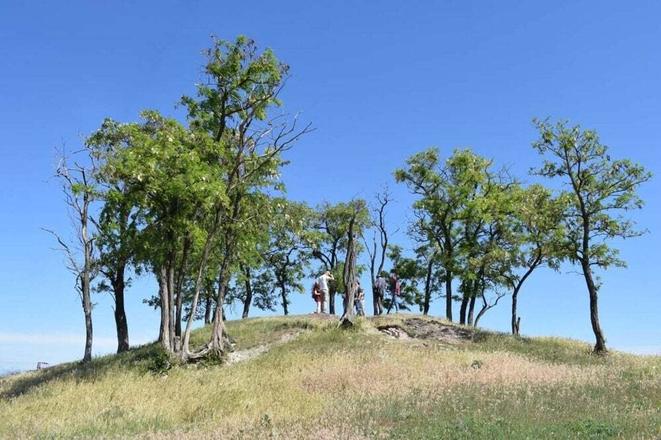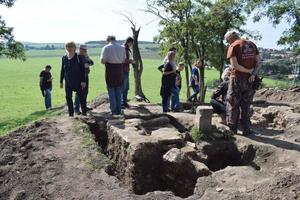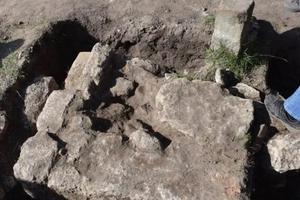Archaeologists have unearthed significant archaeological finds, including human remains and a buckle from the Bronze Age, at a site known as the Holíč gallows. The artefacts were revealed at the end of May.
Thirteen skeletons have been exhumed during the research so far. One of the more grisly finds was a man whose right hand was cut off just before or just after his execution.
Experts started the first stage of their research at the former site of the gallows in Holíč, a town near the border with the Czech Republic, in 2022. Since then, they have organised four digs. There were several gallows in the Záhorie region. But the research in Holíč is very significant for the region, as it is the first systematic archaeological research of a gallows site in Slovakia.
"Záhorie will go down in the history of execution research in Slovakia as the region where it all started," archaeologist Daniel Bešina said.
Buckles on skeletons
The expert explained that the finds from around the gallows would help deepen knowledge about execution practices there, and probably across the whole of Záhorie, Slovakia's western-most region, which covers the area along most of the border with Austria and the south-western part of the border with Czechia.
"The most interesting finds are the remains of four more individuals who ended up at the gallows," Bešina said.
During four digs around the gallows, he and his colleagues discovered the foundations of two stone columns from a masonry gallows, which were connected to each other by a small wall. Similar ones, although larger, still stand today near some towns in Austria. A gallows very similar to that in Holíč can be found in the town of Matten in Switzerland. In the immediate vicinity of the Holíč foundations, the skeletal remains of at least 13 executed people have been found.
"For now, we have confirmation from an anthropologist that these are mostly younger men. The remains of women on the gallows have not yet been identified, which is not unusual, since women rarely ended up on the gallows."
"In addition to these significant finds, we can also mention the discovery of two metal buckles directly on the skeletons of two individuals," he added.
One buckle even had some remnants of textile attached to it.
An unusual type of gallows
All findings from the research so far, according to Bešina, correspond with the results of earlier studies, especially in western Europe. They confirm what occurred at the gallows during their operation and how the bodies of the condemned were handled, including those who could not be buried in consecrated ground like a cemetery.
In the case of the Holíč gallows, he noted, the site is particularly significant due to its unique and atypical design, given its dimensions and appearance.
"As I mentioned, there are similar ones in Austria, but those are structurally larger. The finds cannot yet precisely answer the question of how the Holíč gallows operated. We assume that it functioned at least from the 16th century until the first half of the 18th century at the latest," he concluded.
However, this dating may still be adjusted.
They cut off his right hand
Based on the skeletal findings, it can be assessed that at least two people were executed by beheading, as evidenced by severed cervical vertebrae. Another two individuals were found in an anatomical position with their hands tied behind their backs, which might indicate that they were hanged.
A significant finding related to execution is certainly one of the beheaded men, who had his right hand cut off either before or shortly after death.
'This form of punishment was, for example, for perjury, drawing a sword against a mayor, or similar offences. Without thorough historical research, we cannot yet say for which crime this punishment was administered,' Bešina explained.
However, we can say that such archaeological finds are very rare across all of Europe, he noted.
It is also interesting that most of the skeletons were found in an anatomical position, which means they ended up under the gallows while still having soft tissue on them. Typically, however, archaeological research of gallows sites finds skeletal remains mixed and disordered.
According to archaeologist Stanislava Gogová, an interesting moment during the research was the discovery of unexploded ordnance from the Second World War.

 The site of the Holíč gallows. (source: KPÚ Trnava)
The site of the Holíč gallows. (source: KPÚ Trnava)


